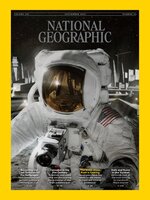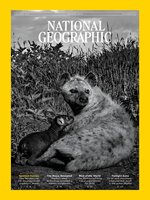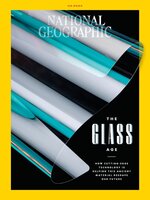Amazing discoveries and experiences await you in every issue of National Geographic magazine. The latest news in science, exploration, and culture will open your eyes to the world’s many wonders.
FROM the EDITOR
IN FOCUS • JUST IN FROM OUR PHOTOGRAPHERS
ISLAMIC ART: THE ART OF ARABIA • From its origins in Arabia, the Muslim faith spread rapidly and developed a distinctive culture, including a form of art that has thrived through the centuries to be instantly recognizable today—Islamic art.
CONTRIBUTORS
PICTURES • National Geographic photographers ventured to places far and wide to capture the year’s most fascinating images. Here are their best—and the stories behind them.
NEW HOPE FOR RHINOS • Nanyuki, Kenya
AN IMPERILED HAVEN • Siwa Oasis, Egypt
TRACKING THE ELUSIVE BLACK TIGER • Odisha State, India
DANGEROUS CROSSROADS • Sioma, Zambia
WILL TRAVELERS Find a LOST INCA CITY? • High in the Peruvian clouds, the hard-to-reach ruins of Choquequirao are spared the crowds that flock to Machu Picchu. That could soon change.
The NAVIGATIONAL POWER of FINDING ZERO° • For centuries, geographers, astronomers, and mariners around the world set their own standards for longitude without any agreement on a universal baseline. Here’s why it took so long to agree on a prime meridian.
LOVE, HATE, AND RATTLESNAKES • They’ve been revered as symbols of renewal. They’ve been reviled as emissaries of the underworld. They’ve been hunted and harassed into the dark corners of our imagination. But can our fears be debunked before an icon of the American West disappears?
WHAT I FOUND Searching for MY FAMILY STORY • Documents and genealogies are helpful—but personal memories are invaluable.
PRETTY in PINK • Gone for a century, wild flamingos are making a comeback in the Sunshine State.
RESURRECTING NOIRE DAME • Five years after a blaze nearly destroyed it, France’s most famous cathedral is reopening. Here’s how the astonishing restoration was pulled off—and how a sense of sacredness was rekindled.
AN ICON REBORN • After a devastating fire ravaged the centuries-old Notre Dame Cathedral, a monumental task for those rebuilding the sacred structure was to blend the styles and innovations of three eras of construction—medieval, 19th century, and today—into one. Here’s how they did it.
WHY SCIENTISTS ARE Rethinking Ancient GENDER ROLES • Archaeologists have found a new tool for studying human remains—and it’s upending what we thought we knew about gender in past societies.
THE NEW STARS OF POLAR SCIENCE • As climate research becomes more critical, a small Arctic research station in Norway has emerged as a scientific boomtown. It’s a haven for an increasingly female-led contingent of experts doing some of the planet’s most important studies—and for the workers who make life in this demanding place more hospitable.
Why CATS Make GREAT SAILORS • They famously detest water but have been fixtures on ships since the dawn of seafaring.
NEW from NATIONAL GEOGRAPHIC

 Dec 01 2025
Dec 01 2025
 Nov 01 2025
Nov 01 2025
 Oct 01 2025
Oct 01 2025
 Sep 01 2025
Sep 01 2025
 Aug 01 2025
Aug 01 2025
 Jul 01 2025
Jul 01 2025
 Jun 01 2025
Jun 01 2025
 May 01 2025
May 01 2025
 Apr 01 2025
Apr 01 2025
 Mar 01 2025
Mar 01 2025
 Feb 01 2025
Feb 01 2025
 Jan 01 2025
Jan 01 2025
 Dec 01 2024
Dec 01 2024
 Nov 01 2024
Nov 01 2024
 Oct 01 2024
Oct 01 2024
 Sep 01 2024
Sep 01 2024
 Aug 01 2024
Aug 01 2024
 Jul 01 2024
Jul 01 2024
 Jun 01 2024
Jun 01 2024
 May 01 2024
May 01 2024
 Apr 01 2024
Apr 01 2024
 Mar 01 2024
Mar 01 2024
 Feb 01 2024
Feb 01 2024
 Jan 01 2024
Jan 01 2024